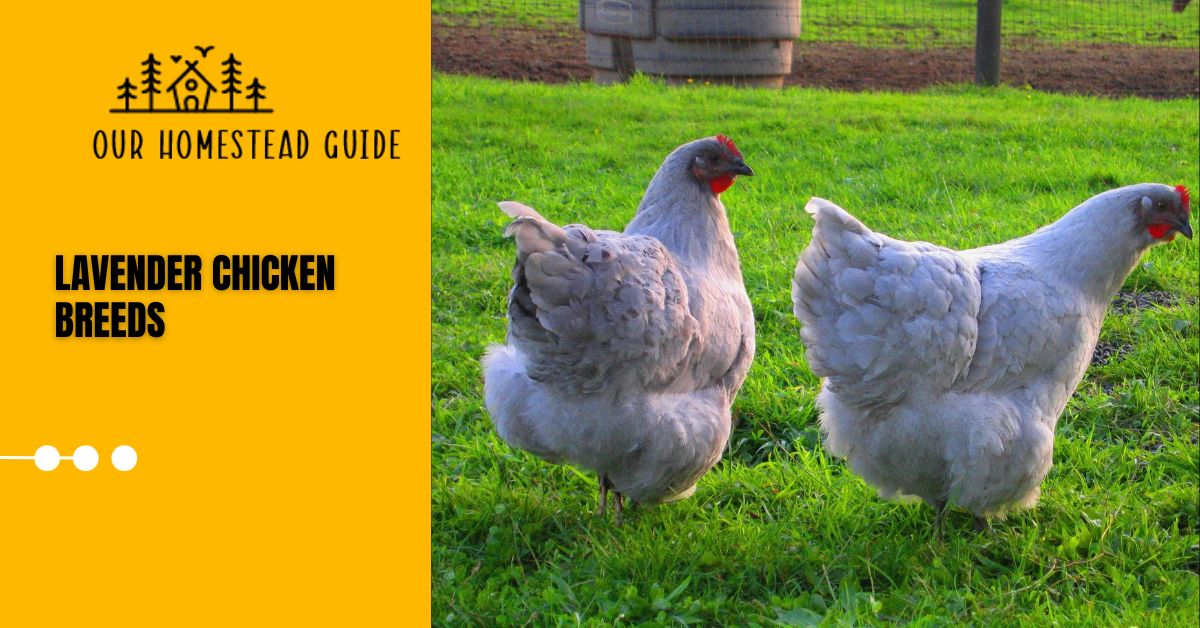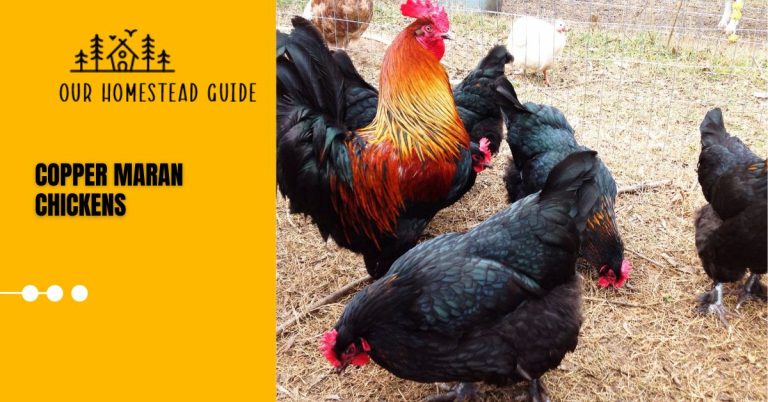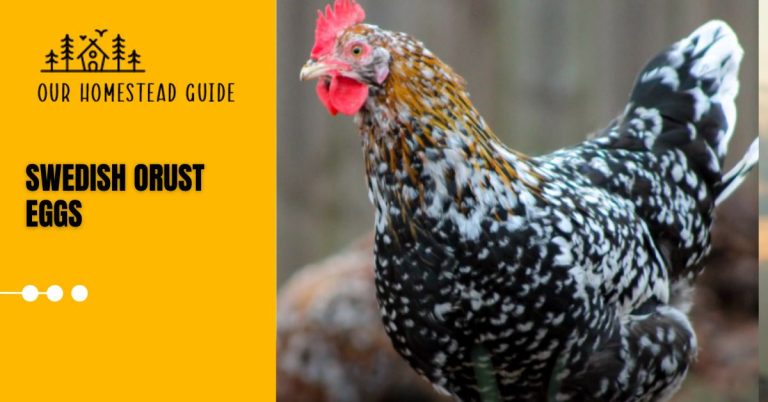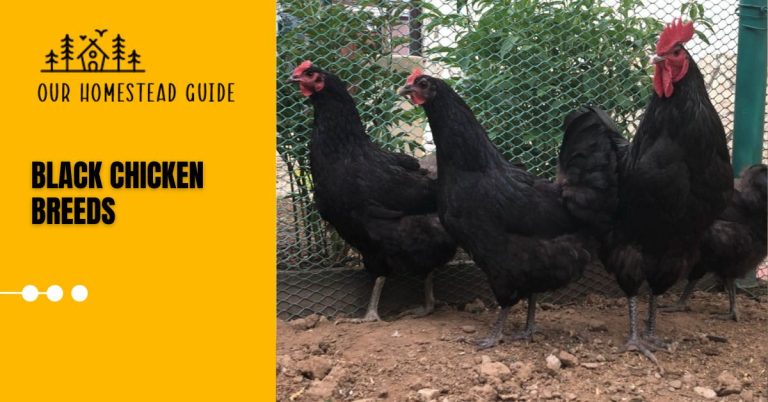Lavender Chicken Breeds: Characteristics & Facts Complete Guide
lavender chicken breeds Although “lavender” isn’t a recognized breed, a unique gene allows for the lovely plumage color to be present in several breeds. Imagine the cooing of a Lavender Araucana laying a turquoise egg, or picture soft Lavender Orpingtons with their fluffy, pastel purple feathers. Try Lavender Polish, with its striking lavender and silver crests, for a hint of majesty.
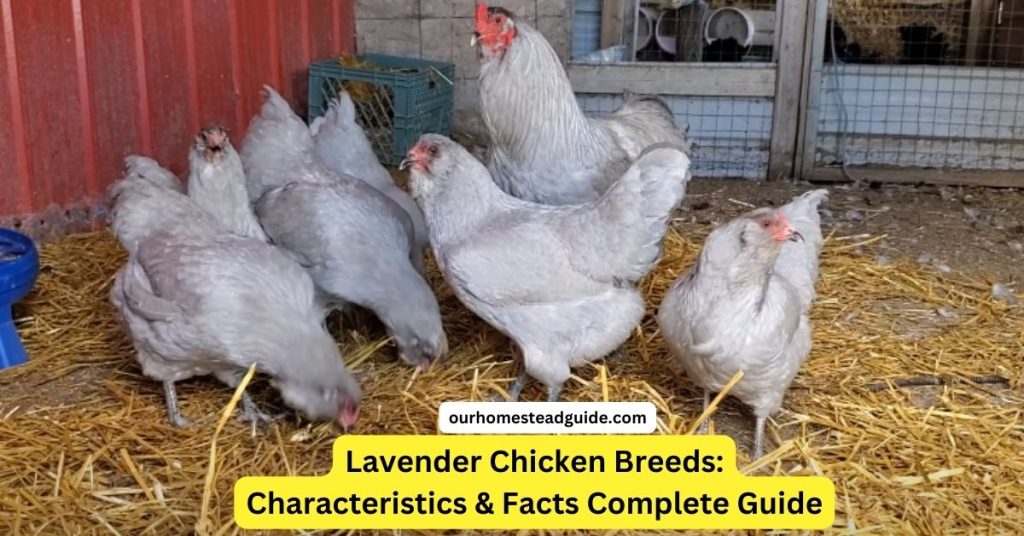
Not to be overlooked are the unusual and endearing Booted Bantams, with their gentle lavender glow and feathery “boots,” or the little Belgian Bearded d’Uccle Bantams in “Porcelain” or “Self-blue.” Recall that not every chick inherits the magic, and true breeding requires time. But with the right choices, your coop may soon resemble a purple feather fantasy.
Understand Lavender Orpington Background
- The Lavender Orpington breed is renowned for its grace, amiability, and ability to produce eggs.
- created in the 1990s by breeder Priscilla Middleton in England.
- Years of crossbreeding to produce lavender Orpingtons with a certain size and kind have produced these animals.
Learn about Lavender Orpington Appearance and Temperament

Big, plump, amiable chickens with an abundance of feathers. renowned for being quite smart, obedient, and inquisitive. Usually have a lower position in a flock’s pecking order. Foraging habits: they like to roam freely but do not know when to run from predators.
Lavender Chicken Breeds overview
| Breed | Traits | Egg Color | Suitability |
|---|---|---|---|
| Lavender Orpington | Gentle giants, calm, fluffy feathers, lavender blends with buff undertones | Cream to light brown | Lively, and curious, lays stunning turquoise eggs, lavender and white |
| Lavender Polish | Dramatic crest, delicate lavender and silver, eye-catching | White | Good egg layers, moderate cold tolerance, extra crest care needed |
| Lavender Araucana | Lively, curious, lays stunning turquoise eggs, lavender and white | Turquoise | Decent egg layers, mild climate preferred |
| Belgian Bearded d’Uccle Bantam | Petite, friendly, good egg layers, “Porcelain” or “Self-blue” varieties with soft lavender | White | Good egg layers, cold tolerant |
| Booted Bantam | Rare, petite, feathered “boots”, charming personality, beautiful lavender hue | White | Moderate egg layers, mild climate preferred |
Understand Lavender Orpington Breed Standard
Neither the US nor the UK have formal recognition for the hue lavender.
should be low to the earth and have a wide, substantial build.
Short tail, paired with a curled, short back.
Shaks and feet are clean slate blue; legs may occasionally have feathers on them.
Reddish-bay eyes, a dark horn-colored beak, and red comb, waddles, and earlobes.
Address Health Issues and egg-laying
- Every year, Lavender Orpingtons may lay between 170 and 200 medium-sized, light-brown eggs.
- Known to be moody; anticipate mood swings from them around once a year.
- Their thick feathering makes them prone to mites and parasites.
- Need appropriate maintenance to be clean and healthy, particularly in the winter.
Breeding Lavender Orpingtons
The gene for lavender color is recessive dilute. Both parent birds must have the lavender gene to create lavender offspring. It takes patience and crossbreeding with unrelated bloodlines to create a lavender line. Keep a close eye out for the tail shredder gene, which might sporadically surface during breeding.
Evaluate if Lavender Orpington is Right for Your Flock
Lavender Orpingtons are peaceful, submissive, and perfect for households with young children.
tolerant of cold yet delicate to too much light. Whether you want broody chickens or not, take into account their broodiness.
Not cheap; in the United States, chicks typically cost between $21 and $45 on average.
1. Prepare a brooder:
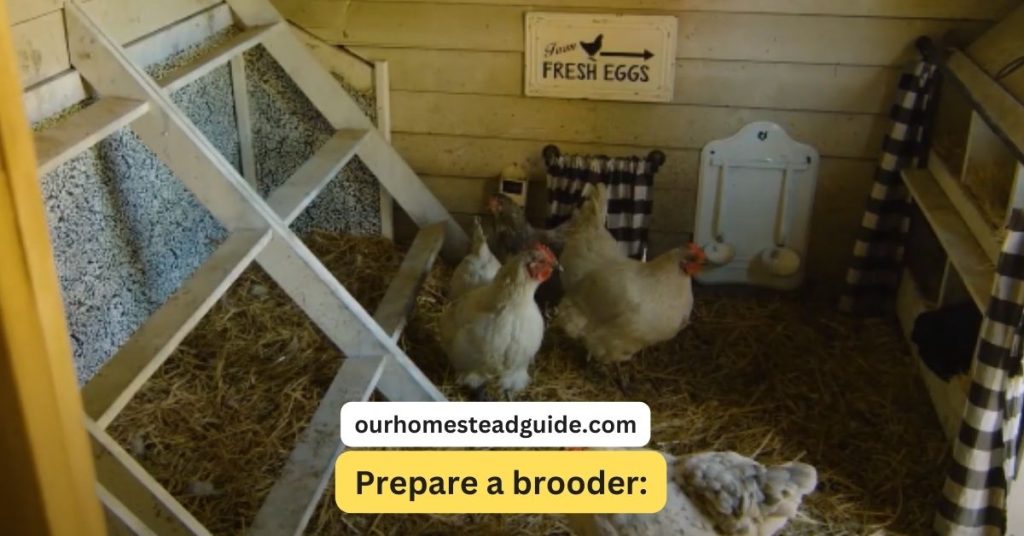
For the first several weeks of their life, chicks are housed in a heated container called a brooder. A brooder can be made yourself, bought at a pet store, or purchased online. The size of the brooder should allow the chicks to walk around easily without becoming disoriented. To keep the chicks warm, line the brooder with shavings or newspaper and place a heat lamp inside.
2. Obtain Lavender Orpington chicks:
Lavender Orpington chicks are available from hatcheries or internet merchants. Make sure the supplier of healthy chicks you select is reliable.
3. Place chicks in the brooder:

Put the chicks in the brooder as soon as they arrive. For the first week, the brooder’s temperature should be between 90 and 95 degrees Fahrenheit. After that, it should progressively drop by 5 degrees per week until it reaches room temperature.
4. Provide food and water:
Give the chicks fresh, clean water and a chick-starting meal. To help prevent the prevalent chicken illness coccidiosis, the chick starting meal should be treated with coccidiostat.
5. Clean the brooder:
To keep the disease from spreading and to get rid of droppings, give the brooder a once or twice a day cleaning.
6. Move the chicks to a coop:
The chicks can be transferred to a permanent coop when they are 6–8 weeks old. There should be plenty of room for the hens to roam about in a well-ventilated, predator-proof coop.
7. Provide food and water:
Until the chicks are sixteen weeks old, keep giving them chick-starting meals. After that, you may feed them a layer diet, which is meant to aid in egg production.
8. Collect eggs:
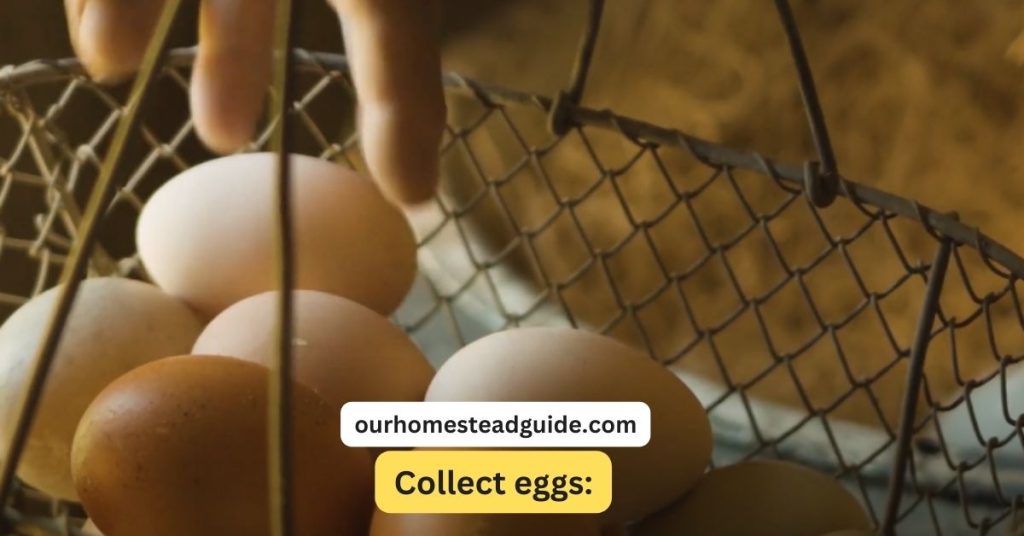
Eggs will be laid by lavender Orpington chickens around six months of age. An average of 200 eggs will be laid by them annually.
9. Enjoy your Lavender Orpington chickens:
Friendly and submissive, lavender Orpington hens are wonderful complements to any garden herd. Their eggs have a lovely light tan hue, and they are also excellent layers.
Lavender Orpington Chicken History
Developed in the late 1990s by breeding Lavender Plymouth Rocks with Black Orpingtons, the Lavender Orpington chicken is a relatively new breed. Despite not being recognized by the American Poultry Association, their amiable disposition and decent egg-laying skills make them a popular choice for backyard chicken keepers.
With beautiful lavender-blue plumage, the Lavender Orpington chicken is a big, kind breed. They are amiable, submissive, and suitable as pets for households with young children. They lay 200 eggs a year on average, making them excellent layers as well.
A lovely breed of chicken, lavender Orpingtons are a wonderful addition to any garden flock. They are not particularly prone to illness, need little maintenance, and thrive in both hot and cold climates. They require lots of fresh food and water, as well as a well-ventilated coop.
Lavender Orpington Appearance
The vivid lavender-blue plumage of Lavender Orpington hens makes them a stunning and unique breed. They are a big, robust breed with a round, wide physique and a kind disposition. The following are some salient features of their appearance:
1-Plumage:
Their beautiful lavender-blue plumage, with a subtle iridescent shimmer, is their most distinctive characteristic. Their feathers are equally colored, which gives them an appealing look.
2-Comb and Wattles:
They have one medium-sized comb that rests firmly atop their heads. Their relatively big, V-shaped wattles are fleshy flaps located beneath their beak.
3-Feet and Legs:

The slate blue hue of their feet and legs goes well with their lavender plumage. They have medium-length legs that are proportionate to their physique.
4-Size:
Typically, lavender Orpington hens weigh between five and seven pounds, while roosters weigh between seven and nine pounds. They are regarded as a giant breed of chicken because of their huge stature.
All things considered, Lavender Orpington hens are an eye-catching breed with a tasteful blend of slate blue feet, lavender feathers, and a nicely built physique. Backyard chicken fans favor them because of their pleasant dispositions and gentle temperament.
Lavender Orpington Chickens Care Requirements
Lavender Orpington hens are excellent additions to backyard flocks since they require little maintenance. The following is a list of the care they need:
Housing:
Cooperation: Assign a suitable-sized, well-ventilated coop that is safe from predators. Give each adult hen five to ten square feet.
Perches: Provide stable perches with adjustable heights to suit a range of chicken sizes and ages. Give each bird a perch space of 10 to 12 inches.
Nesting Cases: Give chickens that lay eggs nesting boxes. Usually, one nesting box is plenty for every two to three chickens.
Feeding:
- starting: Give chicks up to sixteen weeks of age starting a meal.
- Layer diet: Switch to a layer diet designed for egg production after 16 weeks.
- Fresh Water: Make sure there is always availability of fresh, clean water.
- Supplements: To help with digestion, try giving grit and oyster shells as a calcium supplement.
Environment:
Fencing: Make sure there is a safe, enclosed space for external access.
Shelter: Protect from the wind and rain as well as shade in hot weather.
Dust Bath: To assist hens in keeping their feathers healthy and in controlling parasites, provide a dust bath area.
Well-being and Health:
Frequent observation: Keep an eye out for any indications of disease or harm to your hens.
Veterinary Care: For regular checks or with any health concerns, consult a veterinarian.
Pest Control: Take steps to keep vermin such as lice and mites from getting a hold of the coop and the hens.
Lavender Orpington Health Concerns
Here is a summary of Lavender Orpington’s health concerns:
| Health Concern | Description | Prevention |
|---|---|---|
| External parasites | Inability to lay an egg due to large egg, calcium deficiency, or tumor. | Clean, dry coop, dust baths. |
| Internal parasites | Weight loss, diarrhea, death caused by worms, coccidia. | Regular worming, clean, dry coop. |
| Egg binding | Coughing, sneezing, and wheezing are caused by viruses, bacteria, and dust. | Consult a vet immediately. |
| Respiratory infections | Coughing, sneezing, and wheezing caused by viruses, bacteria, and dust. | Consult a vet immediately. |
| Foot problems | Pain, swelling in feet caused by bumblefoot, frostbite. | Clean, dry coop, comfortable roosting area. |
Lavender Orpington Medical Issues
Although Lavender Orpingtons are typically healthy birds, they can contract some common ailments in chickens. The following are some of the most typical health problems that Lavender Orpingtons may experience:
External parasites: other hens, lavender orpingtons are vulnerable to external parasites such fleas, lice, and mites. Anemia, itchiness, and irritation can all be brought on by these parasites. It’s crucial to maintain your chicken coop dry and clean and to give your hens dust baths to ward off outside parasites.
Internal parasites: Worms and coccidia are examples of the internal parasites that Lavender Orpingtons may be vulnerable to. These parasites can result in diarrhea, weight loss, and even death. Worm your hens regularly and keep their coop dry and clean to prevent internal parasites.
Egg binding: When a hen has egg binding, she is unable to lay eggs. Numerous things, such as a big egg, a calcium shortage, or a tumor, might cause this. You should take your hen to the veterinarian right away if you believe she is egg-bound.
Respiratory infections: Chickens frequently have respiratory infections, which can be brought on by several things such as dust, germs, and viruses. A respiratory infection can cause wheezing, sneezing, and coughing. Take your chicken to the veterinarian right away if you suspect she has a respiratory ailment.
Apart from the aforementioned prevalent medical conditions, Lavender Orpingtons may also be vulnerable to some uncommon health difficulties, like:
Feather picking: A chicken that chooses its feathers is said to be feather-picking. Numerous things, such as boredom, stress, or a dietary deficit, might contribute to this. You should speak with a veterinarian to identify the reason and create a treatment plan if you suspect your chicken is feather plucking.
Prolapse: A prolapse is a condition in which a chicken’s vent protrudes from its body. It can be brought on by a tumor or by trying to lay an egg. If you think your chicken may have a prolapse, get veterinarian help right away.
Although lavender orchids are typically healthy, it is important to be informed of any potential health risks. Their chance of becoming sick can be considerably decreased with the right care and a clean atmosphere.
What Is the Price of Lavender Orpingtons?
The age, provenance, and demand for Lavender Orpington chickens are just a few of the variables that might affect their price. Generally speaking, though, you should budget between $3 and $8 for each chick.
Here are a few particular instances of costs from various hatcheries:
- Hoover’s Hatchery: $6.64 – $8.09 per chick
- Cackle Hatchery: $3 – $8 per chick
- Hilltop Farms: $22 – $36 per chick
Please be aware that these costs might change at any time, so for the most recent information on prices, always check with the hatchery or reseller.
Benefits of Lavender Orpingtons
Indeed, the following are a few advantages of keeping Lavender Orpington hens:
amiable and compassionate nature:
Lavender Orpingtons are a wonderful option for households with kids because of their mild and kind disposition. They are not known to be aggressive, and they are generally calm and simple to handle.
Good layers of eggs:
Lavender Orpingtons lay an average of 200 eggs a year, making them excellent egg layers. Their eggs have a somewhat darker speckled pattern and are a lovely light tan hue.
tenacious and flexible:
Lavender Orpingtons are resilient and climate-adaptable hens that can flourish in many different environments. They are rather low-maintenance hens that do not have a high illness risk.
Gorgeous look:
Chicks named Lavender Orpingtons are visually stunning due to their deep lavender-blue feathers. Their feet and legs are slate blue, and they have a single comb and V-shaped wattles.
Make wonderful companions:
Because of their mild disposition and amiable demeanor, lavender orpingtons make wonderful companions. They are an excellent option for novice chicken keepers because they are also rather simple to maintain.
The following are some other advantages of keeping Lavender Orpington hens:
- They will love to eat the worms and bugs in your yard since they are excellent foragers.
- They won’t bother your neighbors because they are calm hens.
- They may be produced for both meat and eggs because they are a dual-purpose breed.
Most Frequently Asked Questions!
1. Are Lavender Orpingtons rare chickens?
They are regarded as rare, yes. These chickens’ lavender hue is a recessive trait, which means that for there to be lavender children, both parents must have the lavender gene. Because of this, they are less frequent and need careful breeding.
2. How do you breed Lavender Orpingtons?
Making sure that both parent birds have the lavender gene is necessary for breeding lavender orpingtons. The lavender color is the consequence of the base color being altered by this recessive diluting gene. In addition to taking time and genetics into consideration, breeding sometimes entails crossbreeding with unrelated lineages.
3. Can I buy Lavender Orpingtons easily?
No, it’s not as easy as picking up some lavender Orpingtons at the store. To generate lavender progeny, breeders especially need to have a hen and a rooster with the lavender gene. Finding breeders who specialize in Lavender Orpingtons may be necessary to purchase them.
4. Are Lavender Orpingtons good for beginners?
Lavender Orpingtons are considered to be gentle and serene, which makes them appropriate for novices. But their broodiness may be a factor, and enough care is required to manage any possible health risks associated with their thick feathering.
5. Do Lavender Orpingtons tolerate cold weather?
They are resistant to cold, indeed. They may cool down fast, therefore being wet doesn’t work well for them. After getting soaked, the hens could appreciate a blowout. To keep them clean and healthy throughout the winter, proper maintenance is necessary.
6. How much do Lavender Orpingtons cost?
Lavender orchids don’t come cheap. In the United States, a chick typically costs between $21 and $45. It’s important to research potential purchases and take the breeder’s reputation into account.
7. Are Lavender Orpingtons suitable for free-ranging?
When it comes to their level of free-ranging savviness, lavender orpingtons are mediocre. They may not be as good at identifying predators, but they still enjoy foraging. They may be made more resistant to possible attacks by installing a rooster or employing other strategies like hanging CDs.
8. How do Lavender Orpingtons handle high temperatures?
Lavender Orpingtons can be difficult to handle in hot weather because of their thick feathers. To remain cool, they require dust baths, cool water, and shade. Mature birds may also lose their lavender hue and have brown or yellow overtones as a result of prolonged sunshine.
9. Are Lavender Orpingtons suitable for 4-H club projects?
Lavender Orpingtons are excellent project birds for the 4-H organization. Young adults interested in poultry initiatives find them intriguing because of their unusual lavender hue and pleasant disposition.
10. Where can I learn more about breeding Lavender Orpingtons?
Specific articles or resources have further details on breeding Lavender Orpingtons, including genetics and breeding factors. There could be links to related articles in the description for additional reading.
Conclusion:
A solid grasp of the background, temperament, look, breed standard, health issues, and breeding procedures is necessary while producing lavender Orpington hens. Whether lavender orpingtons are a good addition to your poultry, depends on your tastes and the demands of your flock.
you may also like this article.

